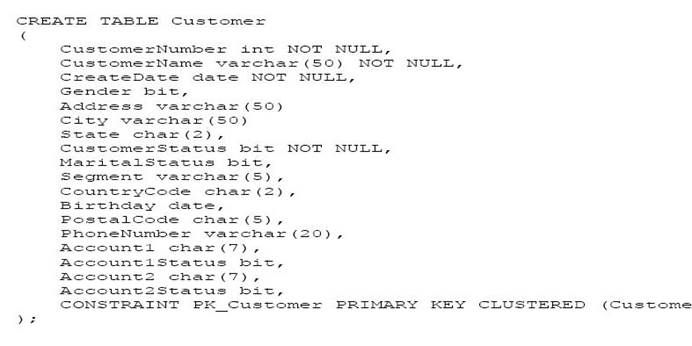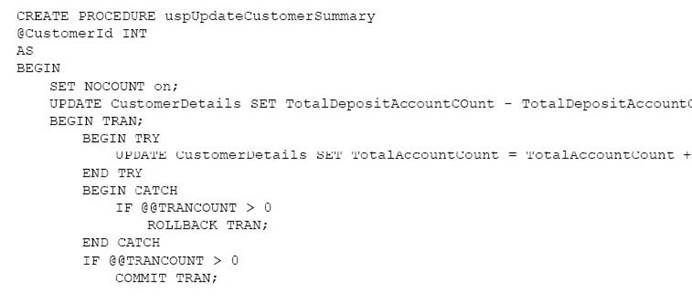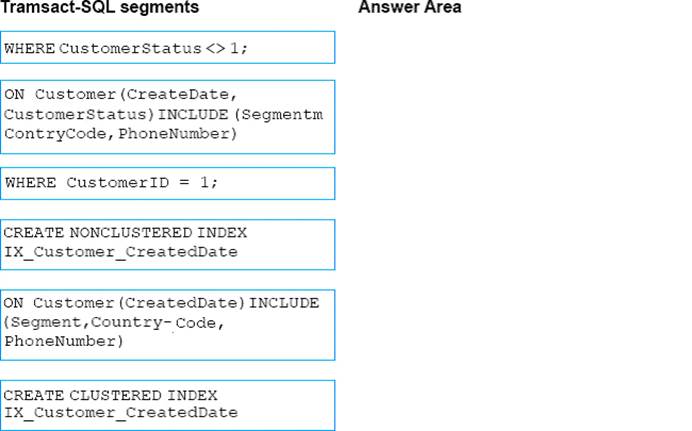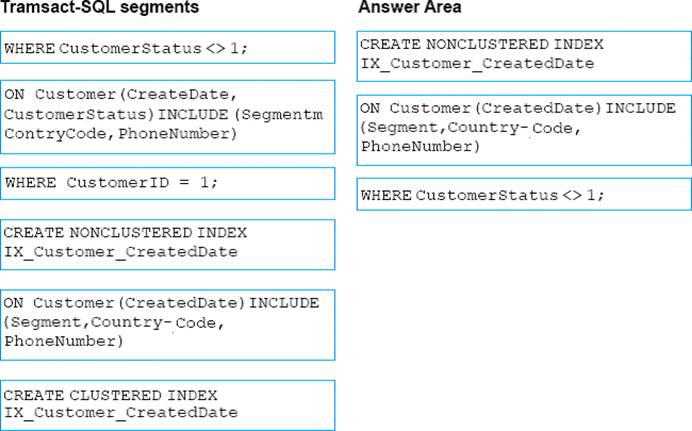DRAG DROP
Note: This question is part of a series of questions that use the same scenario. For your convenience, the scenario is repeated in each question. Each question presents a different goal and answer choices, but the text of the scenario is exactly the same in each question in this series.
You have a database named DB1 that contains the following tables: Customer, CustomerToAccountBridge, and CustomerDetails. The three tables are part of the Sales schema. The database also contains a schema named Website. You create the Customer table by running the following Transact-SQL statement:

The value of the CustomerStatus column is equal to one for active customers. The value of the Account1Status and Account2Status columns are equal to one for active accounts. The following table displays selected columns and rows from the Customer table.

You plan to create a view named Website.Customer and a view named Sales.FemaleCustomers. Website.Customer must meet the following requirements:
Allow users access to the CustomerName and CustomerNumber columns for active customers.
Allow changes to the columns that the view references. Modified data must be visible through the view.
Prevent the view from being published as part of Microsoft SQL Server replication. Sales.Female.Customers must meet the following requirements:
Allow users access to the CustomerName, Address, City, State and PostalCode columns.
Prevent changes to the columns that the view references.
Only allow updates through the views that adhere to the view filter.
You have the following stored procedures: spDeleteCustAcctRelationship and spUpdateCustomerSummary. The spUpdateCustomerSummary stored procedure was created by running the following Transacr-SQL statement:

The following table displays a selected columns and rows from the Customer table. Thr value of the CustomerStatus column is equal to one for active customers. The value of the Account1Status and Account2Status columns are equal to one for active accounts. You run the spUpdateCustomerSummary stored procedure to make changes to customer account summaries. Other stored procedures call the spDeleteCustAcctRelationship to delete records from the CustomerToAccountBridge table.
Users report that the following SELECT statement statement takes a long time to complete:

You need to create an index that meets the following requirements:
Improve the performance of the SELECT statement.
requires minimum index key size.
Only contains active customers.
Makes no change to the existing primary key.
Contains all of the columns required by the SELECT statement.
Which three Transact_SQL segments should you use to develop the solution? To answer, move the appropriate code blocks from the list of code blocks to the answer area and arrange them in the correct order.

Answer: 
Explanation:
Box 1: Clustered Index With the same size of keys, the nonclustered indexes need more space than clustered indexes.
Box 2, Box 3: Include the CustomerStatus column in the index, and only when CustomerStatusnot equal to 1 (the active customers).
References:http://www.sqlserverlogexplorer.com/overview-of-cluster-and-noncluster-index/
